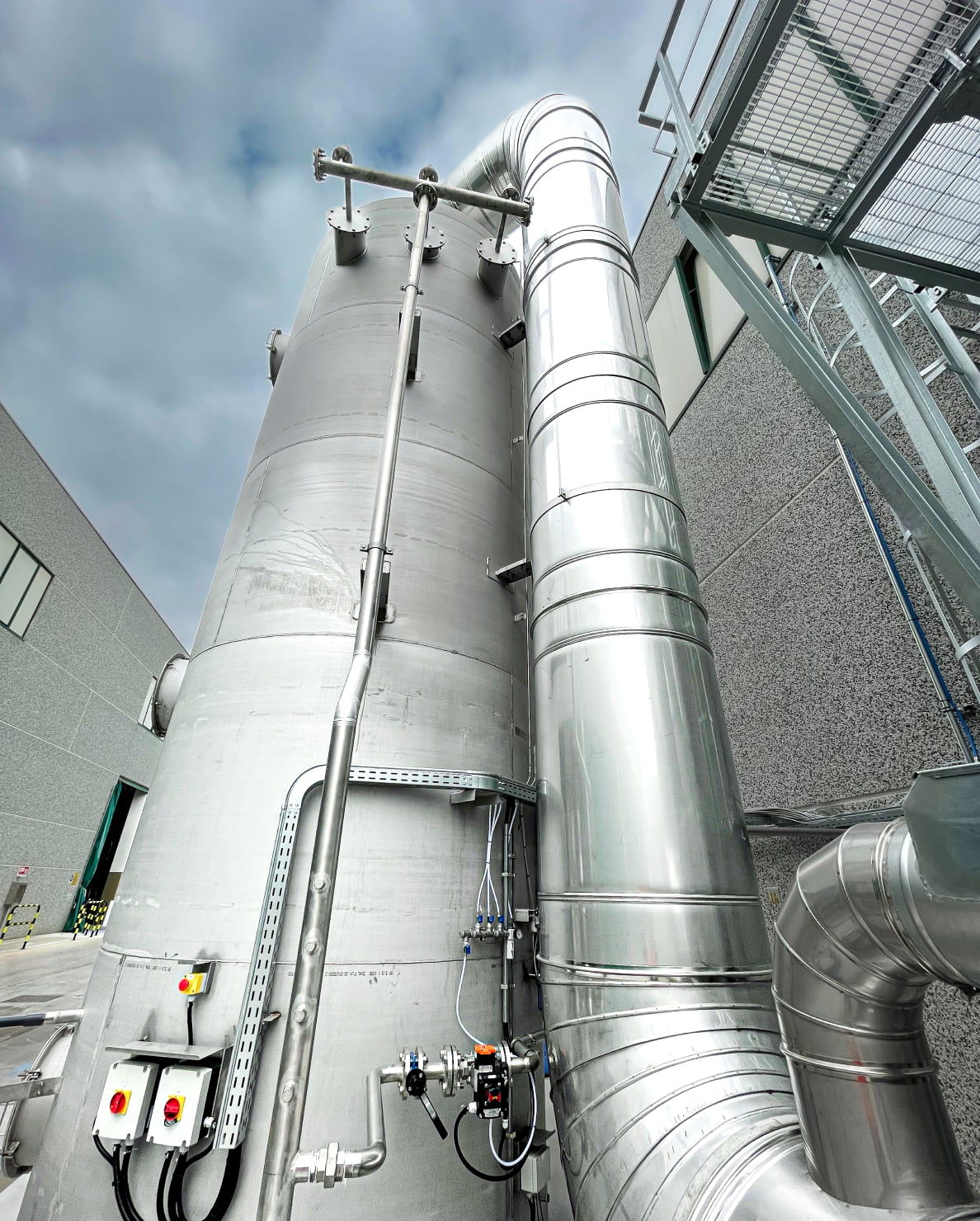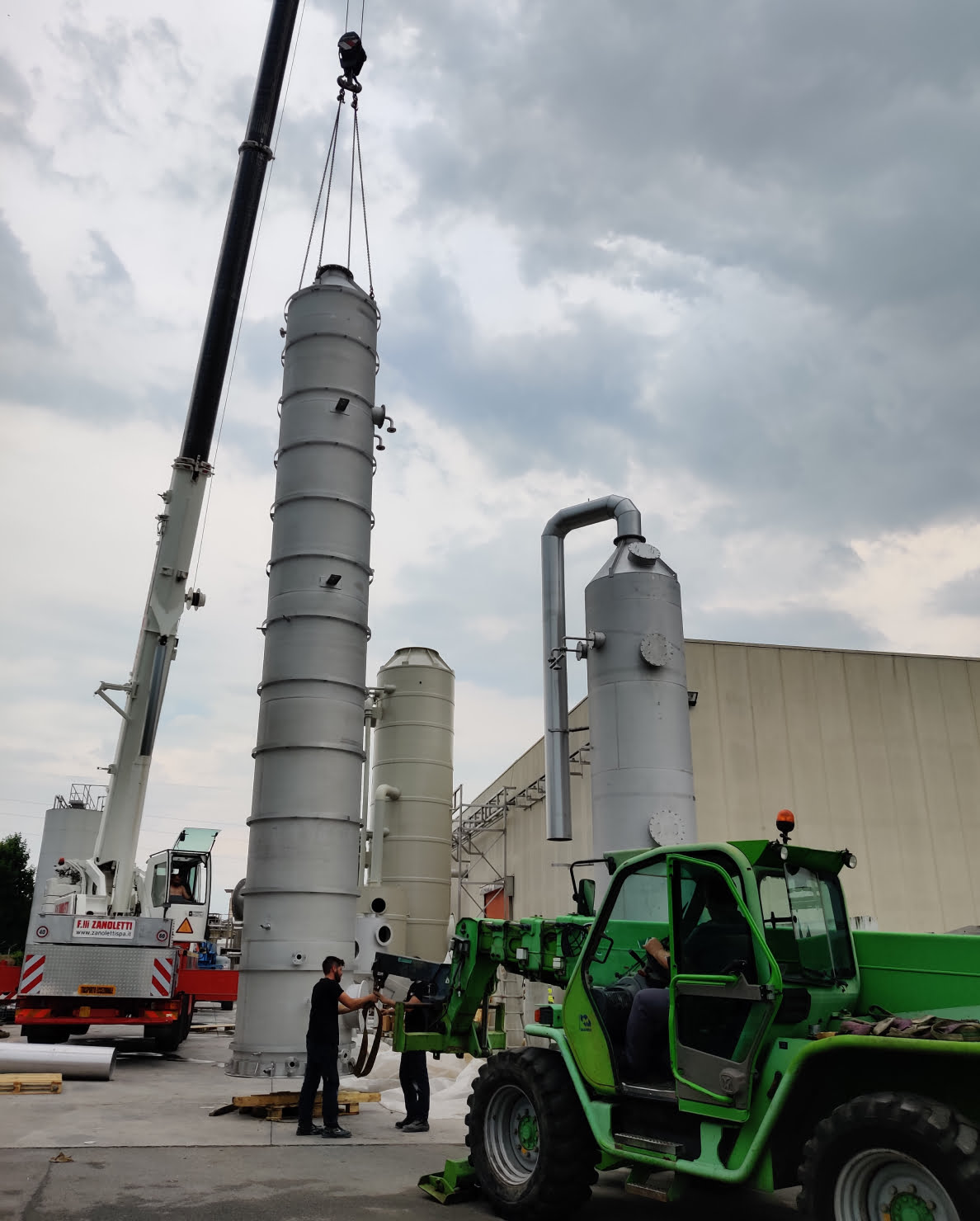

Our gas scrubbers are designed to provide effective treatment for gas flows containing chlorinated compounds.
Scrubbers are used where there are concentrations of acid or basic gases, which are usually generated in conjunction with Volatile Organic Compounds (VOCs) containing halogenated compounds that generate acids.
They are recommended for use as purification systems for the specific elimination of the acid gas emissions (SO2) produced during the combustion of pollutants.
How it works
A scrubber is a system designed to treat gases that are emitted into the atmosphere. It is formed of a packed column where the contaminated gas is treated by exposing it to a liquid (usually in a counter-current) that adsorbs the pollutant. It is a non-destructive technology. In addition to the tower, the scrubber system also incorporates a column in which the adsorbent liquid and the gas to be treated are recirculated in a counter-current, as well as a recirculation pump to recirculate the adsorbent solution. Commonly, a collection tank is also installed, and at regular intervals the solution must be purged as the neutralised substances accumulate. Using a level control system, water and adsorbent fluid is then added in order to continue the adsorption process.
Read more: ScrubbersBecause scrubber systems operate at ambient temperature, if the process gas reaches a high temperature (above 100 ºC – 150 ºC) it will need to be cooled.
Adsorption is a physical phenomenon in which the pollutant is diffused from the gas phase into the liquid phase. It is usually recommended for gases containing acidic pollutants (HCl, HF, H2SO4, etc.) or basic pollutants (NH3, etc.). For gases containing acidic pollutants, the liquid solution that is used acts as a strong base for the neutralisation. For gases containing basic pollutants, an acidic solution is used for the neutralisation.
When the air to be treated contains halogenated compounds, which are oxidised in an RTO or RCO, these compounds recombine with hydrogen to form the associated acid. In the case of chlorine (Cl), it combines with hydrogen to form hydrogen chloride (HCl). Consequently, at the outlet of the oxidiser it is necessary to install a scrubber containing basic adsorbent fluid, e.g. a caustic soda solution (NaOH).

Advantages
-
Neutralisation of pollutants in an atmospheric system and at ambient temperature.They are highly efficient at eliminating pollutants, as they usually take the form of adsorption with acid-base neutralisation reactions that help to eliminate pollutants.Scrubbers are ideal for treating odours.
Related pollutant

You can always count on tailor-made solutions with Exus. We will provide you with the solutions you need at all times.
Our technicians engage with every project, using their expertise and knowledge to design customised equipment for each case and customer.
Request